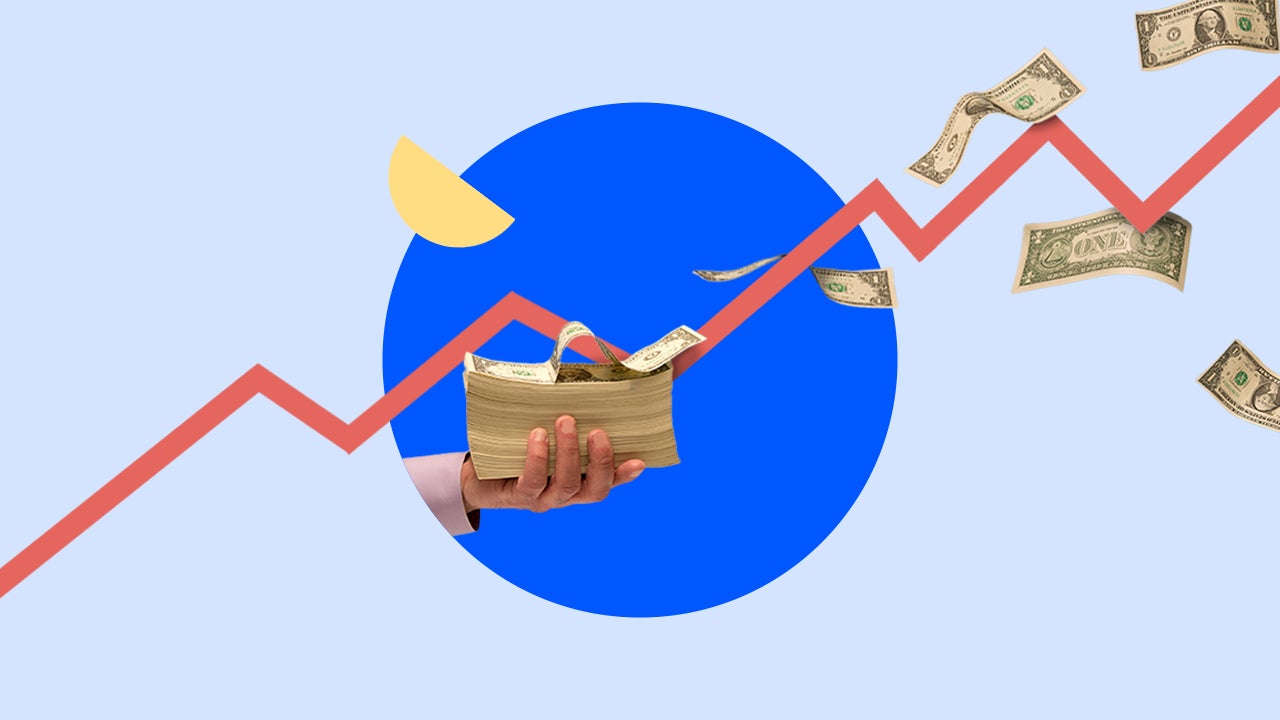The best banks and credit unions of 2025

The best bank and credit union for you will depend on your banking needs, but in general, the best banks offer accounts with low or no minimum balance requirements and don’t charge monthly fees — or at least allow you to waive them.
They also tend to have helpful technology and offer their customers high-yield savings accounts and certificates of deposits (CDs) with competitive yields.
Best banks and credit unions
Ally Bank
Bankrate's take
Ally Bank is an online bank and a digital leader offering the full suite of deposit products, all with strong rates, making it a great option for those looking to consolidate their finances under one roof. And even if you’re interested in just one or two accounts, yields at Ally tend to always be competitive — even if they’re not always the highest — so you can trust you’re getting a competitive rate.
To boot, Ally charges few fees and offers reimbursements for using out-of-network ATMs with its checking account. Ally also offers 24/7 customer service and has a handy widget on its website that shows what the wait time is to reach a representative.
Quorum Federal Credit Union
Bankrate's take
Qourum is a highly accessible credit union offering a wide array of checking and savings accounts that can fit different needs. To join, you can be a member (or the family of a member) of select employee groups, or you can establish membership by joining the American Consumer Council (ACC), which is free to do. You can even establish ACC membership during the Quorum membership application process.
Quorum’s accounts feature all the bells and whistles when it comes to digital banking, including access to digital wallets, Zelle, bill pay and the ability to check your credit score, to name a few.
Chase Bank
Bankrate's take
When it comes to branches, it’s tough to beat Chase Bank’s footprint, which spans across 48 states and Washington D.C. Chase’s branch number tops out at a whopping 5,000 across the country. So, whether you’re at home or traveling within another state, you’ll likely have access to a branch if you need it. Add to that approximately 15,000 ATMs and you’ll never be too far away from your cash.
But take note: Chase savings accounts and CDs pay pretty much no interest, and you’ll have to make sure you follow requirements to get monthly fees waived for any checking and savings accounts.
Capital One
Bankrate's take
Fee-free access to your cash is a must, especially when you’re banking at a mostly-digital institution. Capital One maintains more than 70,000 ATMs nationwide, which includes access to the MoneyPass and Allpoint ATM networks. You’ll be able to find some of these ATMs in select Target, Walgreen and CVS locations, and you can even add cash to your checking account at those latter two stores.
Plus, banking at Capital One means you get access to strong APYs on savings and fee-free checking.
Bank of America
Bankrate's take
No doubt you’ve heard of Bank of America, but do you know about Erica? She is Bank of America’s virtual financial assistant, available 24/7 right from the bank’s highly-rated mobile app. Erica can help you with basic account management tasks, but she can also monitor recurring charges and merchant refunds in your account, sending you important alerts such as when a recurring charge (like a subscription) has increased month-over-month.
Beyond Erica, Bank of America’s mobile app comes with budgeting tools and the ability to check your credit score. Much like at other big brick-and-mortar institutions like Chase, you won’t earn much on your savings at Bank of America, and you’ll have to make sure you meet requirements to waive monthly account fees.
Jenius Bank
Bankrate's take
Jenius Bank’s high-yield savings account launched in 2023 with an extremely competitive APY, which remains robust. And there are no contingencies on earning that APY, so whether you deposit $1 or $1,000, you’ll earn the same high rate with no fees. Although it’s a new bank, you can have peace of mind that Jenius Bank is FDIC-insured up to the limit allowed by law.
Forbright Bank
Bankrate's take
Forbright Bank stands out as an institution that places an emphasis on its sustainability efforts, which includes clean energy financing. The bank won’t finance fossil fuel extraction or infrastructure — though there some caveats to that, according to Forbright’s 2023 Sustainability Report. Moreover, the bank also focuses on financing sustainable projects, including sustainable energy and mobility, industrial decarbonization and sustainable water, waste and agriculture.
You can open a high-yield savings account and CDs with strong APYs at Forbright, but you’ll have to look elsewhere for your checking account — the bank doesn’t currently offer one.
Texas Capital Bank
Bankrate's take
Texas Capital Bank has won Bankrate’s best regional bank award for two years in a row. That’s because the bank offers stellar rates on its deposit accounts with minimal fees. Texas residents get the best of the bank’s rates, particularly with its Star High-Yield Savings account, though other accounts at the bank are available nationally. And even though it’s a regional bank, customers still get access to a broad fee-free ATM network, and generous rebates on out-of-network ATM surcharges for its Star Plus Checking account.
Compare the best banks for your needs
- Best credit unions
- Best online banks
- Best big banks
- Best regional banks
- Best banks for sign-up bonuses
- Best banks for customer experience
- Best banks for early direct deposit
Credit unions vs. banks
Both credit unions and banks offer a variety of financial products, including checking, savings, money market accounts and certificates of deposit (CD), though credit unions typically refer to CDs as “share certificates.”
Credit unions are not-for-profit organizations owned by their members. This means they typically return profits to their members in the form of higher APYs and lower loan rates. Because of their community-driven approach, credit unions tend to serve a specific region, employer or group, and membership often requires meeting certain eligibility criteria.
In contrast, banks are for-profit financial institutions. Opening an account at a bank is generally straightforward, though some banks, regional banks in particular, might only offer their accounts and services to those living in certain states. Traditional banks — especially large national ones — often have more branch locations and advanced technology, including mobile banking apps with features like automated savings tools.
Both banks and credit unions are federally insured — banks by the Federal Deposit Insurance Corporation (FDIC) and credit unions by the National Credit Union Administration (NCUA). Both forms of insurance provide the same amount of deposit protection: up to $250,000 per depositor, per institution, per ownership category.
When deciding where to bank, consider factors like interest rates, fees, convenience and digital access. Some consumers prefer credit unions for their member-focused benefits, while others opt for banks due to their wider accessibility and technological advancements. If you’re looking for the best of both worlds, online banks and credit unions with robust digital services tend to offer competitive rates with the convenience of traditional banks in the form of wide fee-free ATM access.
Bankrate staff insights
Bottom line
Over time, banking options evolve, enhancing the products, services and overall experience for the banking customer. So, it’s worth taking time to re-evaluate your bank to ensure it’s providing you with products that offer a competitive yield, a highly-rated app or customer service that meets your personal finance needs.
Research methodology
Bankrate researches over 100 banks and credit unions, including some of the largest financial institutions, online-only banks, regional banks and credit unions with both open and restrictive membership policies.
We score these institutions based on their product offerings (savings, checking accounts, CDs and money market accounts), APYs, fees, minimum deposit requirements, funds access, digital features and more.
The highest-rated banks and credit unions overall, as well as within certain categories, made this list. Learn more about our methodology for reviewing banks.






